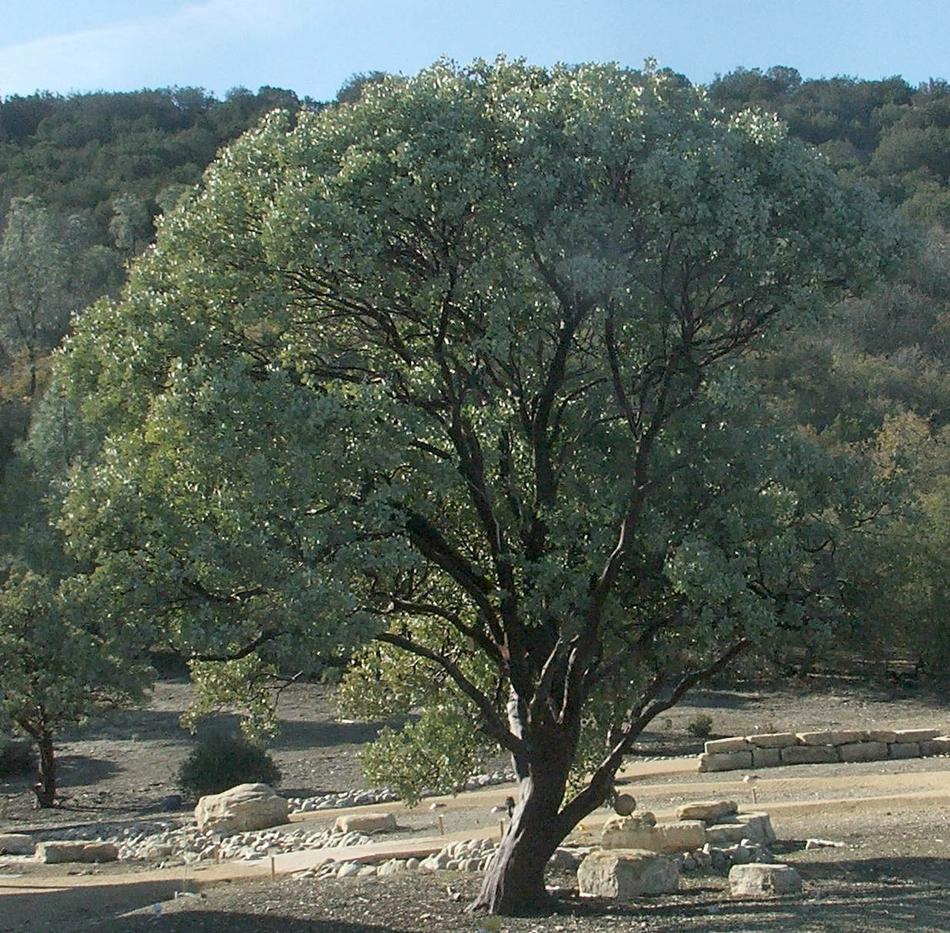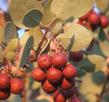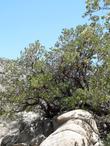Arctostaphylos glauca
Big Berry Manzanita and Blue Manzanita.
Big Berry Manzanita, Arctostaphylos
glauca is an evergreen shrub to small tree, with red-brown bark,
7-10' foot high and wide. It will be lower and wider where there is
snow.
A
gray green foliage that can look white if you make the plant happy. If
the plant gets some water or fertilizer it will be greener, but
shorter- lived. Native to middle coast ranges to Palm Springs area. In certain areas of California, this is one of the few manzanitas that can extend from a mountain climate to a desert climate, and be at home in both. Big berry manzanita is native in its range with Arctostaphylos parryana, Atriplex canescens, Juniperus
californica, Chrysothamnus nauseosus, Eriogonum fasciculatum, Rhamnus
californica, R. ilicifolia, Pinus sabiniana, P. monophylla, Artemisia tridentata,
Haplopappus linearifolius, Adenostoma fasciculatum, Sambucus mexicana,
Salix lasiolepis, S. laevigata, Quercus agrifolia,
Q. chrysolepis, Q. alvordiana, and Q. dumosa. Sometimes Arctostaphylos glauca grows with an understory of Salvia sonomensis.
Arctostaphylos
glauca does well in heavier soils but also excels in decomposed granite. Needs
water for the first year, then quite drought
tolerant.
Partially ripe berries make good manzanita jelly. This
manzanita is more susceptible to red leaf spot gall near the coast. Big
berry Manzanita is very effective in desert areas, stunning in the San
Joaquin Valley, and tolerates alkaline or serpentine soil well. Young, unprotected
plants made it through here this year at -4 F., with the ground
frozen to 15". A one gallon plant will commonly make a 3 foot manzanita
tree in two years.
Arctostaphylos glauca tolerates alkaline soil and serpentine.
Arctostaphylos glauca is great for a bird garden.
Foliage of Arctostaphylos glauca has color green-gray and is evergreen.
Flower of Arctostaphylos glauca has color white.
Fruit of Arctostaphylos glauca is edible.
Communities for Arctostaphylos glauca:Chaparral, Joshua Tree Woodland and Pinyon-Juniper Woodland.
| ph: | 6.00 to 7.60 |
|---|---|
| usda: | 7 to 10 |
| height[m]: | 1.00 to 4.00 |
| width[m]: | 1.00 to 2.50 |
| rainfall[cm]: | 28.00 to 100.00 |











